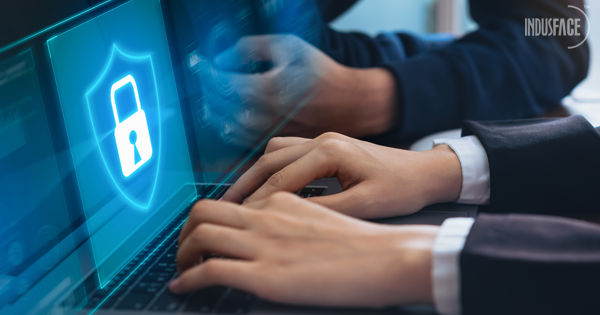SaaS (Software as a Service) is the name of a cloud-based distribution model that enables customers to buy or access applications on the internet, primarily with a web browser. Hardware, application software, and middleware come from the provider, making sure that the SaaS solution does the work as intended.
The popularity of SaaS model has exploded with both individual users and companies, but how does it work, and what type of SaaS security risks are there?
Why is SaaS Getting Popular with Businesses?
1. Scaling
SaaS users can scale their resources up and down according to their needs, whereas with an on-site solution, extra hardware would have to be bought and the underlying infrastructure modified for it to be able to handle a greater workload.
2. Implementation
It takes far more time to implement a solution onsite than to become a SaaS user. The SaaS users just have to sign up, select their subscription type, create user accounts for all the relevant employees and wait for them to log in to begin. Also, there is no need for SaaS customers to invest money in IT infrastructure or to buy a software license for all users and hire workers to support and look after the application.
3. Easy Maintenance and Upgrading
The availability, security, and stability of the solution are ensured by the vendor, which also provides simultaneous updates for every user without any negative influence on their operations. This is in stark contrast to on-site updates, which would require advanced testing to test compatibility and security.
However, there are SaaS security risks that need to be taken into consideration.
5 Security Concerns of SaaS Users
1. Access By Insecure Networks
One benefit of using SaaS is that they can be accessed from almost anywhere, providing their device has internet access – from home, a hotel suite, or a coffee shop. However, the downside of this is that there is no authentication required when making use of a public Wi-Fi access point, which means that the network connection may not be secure.
Hackers could intercept information and even distribute malware if a network allows file-sharing. The good news is several measures can be taken to safeguard both user credentials and data.
Measures that can be taken to improve SaaS security include adding two-factor authentication, introducing rules for the creation of passwords, making use of secure web gateways, and finding a product that enables access only from particular IP addresses.
2. App/Data Access Leaks
The use of a cloud-based application that is not part of the infrastructure of a company means there is a risk of people using an application and accessing sensitive data without permission, and SaaS does not necessarily give role-based or attribute-based access control.
It is a good idea to check on SaaS cloud security in advance. Some solutions may come with access management rights that can be synchronized with an existing corporate access control system but otherwise, a customized on-site solution that meets the data security requirements may be the best option.
3. Data Breaches
Data breaches can threaten the SaaS cloud security and on-site solutions. However, SaaS users will find their data safety is dependent on their provider, which is why it is important to find out the vendor’s policies and procedures for preventing and responding to cyberattacks and recovering from them.
Users should ask their provider about their SaaS security concerns, such as:
- How data breaches are detected by their security teams, and the actions they will take to contain any potential damage?
- Do they make use of system backups to ensure data restoration?
- How will they eliminate threats or restore damaged systems?
4. Where Is Data Stored?
SaaS users must be aware of the location in which their data is residing to follow local data regulations or to make sure their data is being stored and processed within a particular country or region. However, data localization cannot be guaranteed by a provider.
5. Will the Solution Comply with Data Privacy Regulations?
In a survey by McKinsey in 2019 regarding SaaS security, respondents displayed a lack of trust in the claims made by vendors about how their products comply with data privacy regulations. However, the jurisdiction of vendors is ensured by regulations such as CCPA, GDPR, LGPD, and so on.
Conclusion
The delivery model used by SaaS software systems means that companies can make improvements to their operations with the use of cutting-edge solutions without having to maintain or update hardware or software.
However, SaaS security issues and concerns cannot be ignored, which is why it is vital to use high-quality SaaS security solutions such as AppTrana from Indusface to address these critical issues.

